25 AUG 1916 THE NATIONAL PARK SERVICES
National Park Service
From Wikipedia, the free encyclopedia

National Park Service Arrowhead
| |
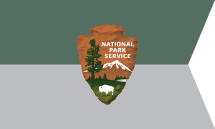
Guidon of the National Park Service
| |
| Agency overview | |
|---|---|
| Formed | August 25, 1916 |
| Jurisdiction | United States federal government |
| Headquarters | 1849 C Street NW, Washington, D.C. 20240 |
| Employees | 15,828 permanent, 1,256 term, 2,984 seasonal (2007) |
| Annual budget | $2.924 billion (2009) |
| Agency executive |
|
| Parent agency | Department of the Interior |
| Website | www |
The National Park Service (NPS) is an agency of the United States federal government that manages all U.S. national parks, many American national monuments, and other conservation and historical properties with various title designations.[1] It was created on August 25, 1916, by Congress through the National Park Service Organic Act[2] and is an agency of the United States Department of the Interior. The NPS is charged with a dual role of preserving the ecological and historical integrity of the places entrusted to its management while also making them available and accessible for public use and enjoyment.
As of 2008 21,989 employees of the NPS oversee 413 units, of which 59 are designated national parks.[3]
The National Park Service is celebrating its centennial in 2016.
Contents
[hide]- 1History
- 2Directors
- 3National Park System
- 4Budget
- 4.1Discretionary spending
- 4.2Resource stewardship
- 4.3Visitor services
- 4.4Park protection
- 4.5Facility maintenance and operations
- 4.6Park support
- 4.7External administrative costs
- 4.8Park partnerships
- 4.9Land and Water Conservation Fund (LWCF)
- 4.10Construction
- 4.11Historic preservation fund
- 4.12National recreation and preservation
- 4.13Offsetting reductions and fixed costs in various accounts
- 4.14American Recovery and Reinvestment Act
- 4.15Great Lakes Restoration Initiative
- 4.16Mandatory spending
- 4.17Employees and volunteers
- 4.18Economic benefits
- 5Nomenclature
- 6Visitors
- 7Youth programs
- 8Accessibility
- 9Concessions
- 10Bookstores
- 11Offices
- 12Staff and volunteers
- 13Law enforcement
- 14Special divisions
- 15International affairs
- 16Initiatives
- 17Related acts
- 18See also
- 19References
- 20Sources
- 21External links
History[edit]
Main article: History of the National Park Service
See also: National Park Service Organic Act
National parks and national monuments in the United States were originally individually managed under the auspices of the Department of the Interior. The movement for an independent agency to oversee these federal lands was spearheaded by business magnate and conservationist Stephen Mather, as well as J. Horace McFarland. With the help of journalist Robert Sterling Yard, Mather ran a publicity campaign for the Department of the Interior. They wrote numerous articles that praised the scenic and historic qualities of the parks and their possibilities for educational, inspirational, and recreational benefits.[4] This campaign resulted in the creation of a National Park Service. On August 25, 1916, President Woodrow Wilson signed a bill that mandated the agency "to conserve the scenery and the natural and historic objects and wildlife therein, and to provide for the enjoyment of the same in such manner and by such means as will leave them unimpaired for the enjoyment of future generations."[5] Mather became the first director of the newly formed NPS.[6]
On March 3, 1933, President Herbert Hoover signed the Reorganization Act of 1933. The act would allow the President to reorganize the executive branch of the United States government. It wasn't until later that summer when the new President, Franklin D. Roosevelt, made use of this power. Deputy Director Horace M. Albright had suggested to President Roosevelt that the historic sites from the American Civil War should be managed by the National Park Service, rather than the War Department. President Roosevelt agreed and issued two Executive orders to make it happen. These two executive orders not only transferred to the National Park Service all the War Department historic sites, but also the national monuments managed by the Department of Agriculture and the parks in and around the capital, which had been run by an independent office.[7]
In 1951, Conrad Wirth became director of the National Park Service and went to work on bringing park facilities up to the standards that the public expected. The demand for parks after the end of the World War II had left the parks overburdened with demands that could not be met. In 1952, with the support of President Dwight D. Eisenhower, he began Mission 66, a ten-year effort to upgrade and expand park facilities for the 50th anniversary of the Park Service. New parks were added to preserve unique resources and existing park facilities were upgraded and expanded.[7]
In 1966, as the Park Service turned 50 years old, emphasis began to turn from just saving great and wonderful scenery and unique natural features to making parks accessible to the public. Director George Hartzog began the process with the creation of the National Lakeshores and then National Recreation Areas.
National parks[edit]
Since its inception in 1916, the National Park Service has managed each of the United States' national parks, which have grown in number over the years to 59.
Yellowstone National Park was the first national park in the United States. In 1872, there was no state government to manage it, so the federal government assumed direct control. Yosemite National Park began as a state park; the land for the park was donated by the federal government to the state of California in 1864 for perpetual conservation. Yosemite was later returned to federal ownership.
At first, each national park was managed independently, with varying degrees of success. In Yellowstone, the civilian staff was replaced by the U.S. Army in 1886. Due to the irregularities in managing these national treasures, Stephen Mather petitioned the federal government to improve the situation. In response, Secretary of the Interior Franklin K. Lane challenged him to lobby for creating a new agency, the National Park Service, to manage all national parks and some national monuments. Mather was successful with the ratification of the National Park Service Organic Act in 1916.[8] Later, the agency was given authority over other protected areas, many with varying designations as Congress created them.
Directors[edit]
| Name[9] | Term of Office | ||
|---|---|---|---|
| Start | End | ||
| 1 | Stephen Mather | May 16, 1917 | January 8, 1929 |
| 2 | Horace M. Albright | January 12, 1929 | August 9, 1933 |
| 3 | Arno B. Cammerer | August 10, 1933 | August 9, 1940 |
| 4 | Newton B. Drury | August 20, 1940 | March 31, 1951 |
| 5 | Arthur E. Demaray | April 1, 1951 | December 8, 1951 |
| 6 | Conrad L. Wirth | December 9, 1951 | January 7, 1964 |
| 7 | George B. Hartzog, Jr. | January 9, 1964 | December 31, 1972 |
| 8 | Ronald H. Walker | January 7, 1973 | January 3, 1975 |
| 9 | Gary Everhardt | January 13, 1975 | May 27, 1977 |
| 10 | William J. Whalen III | July 5, 1977 | May 13, 1980 |
| 11 | Russell E. Dickenson | May 15, 1980 | March 3, 1985 |
| 12 | William Penn Mott, Jr. | May 17, 1985 | April 16, 1989 |
| 13 | James M. Ridenour | April 17, 1989 | January 20, 1993 |
| 14 | Roger G. Kennedy | June 1, 1993 | March 29, 1997 |
| 15 | Robert Stanton | August 4, 1997 | January 2001 |
| 16 | Fran P. Mainella | July 18, 2001 | October 15, 2006 |
| 17 | Mary A. Bomar | October 17, 2006 | January 20, 2009[10] |
| 18 | Jonathan Jarvis | September 24, 2009 | incumbent[11] |
National Park System[edit]
| This section is missing information about governance, policy decisions etc. (September 2015) |
See also: List of the United States National Park System official units and List of areas in the United States National Park System
Further information: African-American Heritage Sites (U.S. National Park Service), Hispanic Heritage Site, Native American Heritage Sites (U.S. National Park Service), and Women's History Sites (U.S. National Park Service)
The National Park System (NPS) includes all properties managed by the National Park Service (also, confusingly, "NPS"). The title or designation of a unit need not include the term park; indeed, most do not. The System as a whole is considered to be a national treasure of the United States, and some of the more famous national parks and monuments are sometimes referred to metaphorically as "crown jewels".[12] The system encompasses approximately 84.4 million acres (338,000 km²), of which more than 4.3 million acres (17,000 km²) remain in private ownership. The largest unit is Wrangell-St. Elias National Park and Preserve, Alaska. At 13,200,000 acres (53,000 km²), it is over 16 percent of the entire system. The smallest unit in the system is Thaddeus Kosciuszko National Memorial, Pennsylvania, at 0.02 acre (80 m²).
In addition to administering its units and other properties, the National Park Service also provides technical and financial assistance to several "affiliated areas" authorized by Congress. The largest affiliated area is New Jersey Pinelands National Reserve at 1,164,025 acres (4711 km²). The smallest is Benjamin Franklin National Memorial at less than 0.01 acres (40 m2).
Although all units of the National Park System in the United States are the responsibility of a single agency, they are all managed under individual pieces of authorizing legislation or, in the case of national monuments created under the Antiquities Act, presidential proclamation. For example, because of provisions within their enabling legislation, Congaree National Park is almost entirely wilderness area devoid of development, yet Yosemite allows unique developments such as the Badger Pass Ski Area and the O'Shaughnessy Dam within its boundaries. Death Valley National Park has an active mine legislated within its boundaries. Such irregularities would not be found in other parks unless specifically provided for with exceptions by the legislation that created them.
Holdings[edit]
For current specifics and a multitude of information, see the Quick Facts[13] section of the NPS website.
| Type | Amount | |
|---|---|---|
| Area of land[14] | 84,000,000 acres | 340,000 km2 |
| Area of oceans, lakes, reservoirs[14] | 4,502,644 acres | 18,222 km2 |
| Length of perennial rivers and streams[14] | 85,049 mi | 136,873 km |
| Archeological sites[14] |
68,561
| |
| Length of shoreline[14] | 43,162 mi | 69,463 km |
| Historic structures[14] |
27,000
| |
| Objects in museum collections[14] |
121,603,193
| |
| Buildings |
21,000
| |
| Trails | 12,250 mi | 19,710 km |
| Roads | 8,500 mi | 13,700 km |
Criteria[edit]
Most units of the National Park Service have been established by an act of Congress, with the president confirming the action by signing the act into law. The exception, under the Antiquities Act, allows the president to designate and protect areas as National Monuments by executive order. Regardless of the method used, all parks are to be of national importance.[15]
A potential park should meet all four of the following standards:
- It is an outstanding example of a particular type of resource.
- It possesses exceptional value or quality in illustrating or interpreting the natural or cultural themes of our Nation's heritage.
- It offers superlative opportunities for recreation, for public use and enjoyment, or for scientific study.
- It retains a high degree of integrity as a true, accurate, and relatively unspoiled example of the resource.
Special designations[edit]
Wilderness areas are covered by the US National Wilderness Preservation System, which protects federally managed lands that are of a pristine condition, established by the Wilderness Act (Public Law 88-577) in 1964. The National Wilderness Preservation System originally created hundreds of wilderness zones within already protected federally administered property, consisting of over 9 million acres (36,000 km²).
Marine Protected Areas (MPAs) began with Executive Order 13158 in May 2000, when official MPAs were established for the first time.[16] The initial listing of U.S. areas was presented in 2010, consisting of areas already set aside under other legislation. The National Park Service has 19 park units designated as MPAs.[16]
See also: § International Affairs
Budget[edit]
See also: United States federal budget and United States budget process
As of 2016, the National Park Service has an annual budget of about $3 billion and an estimated $12 billion maintenance backlog.[17]
The National Park Services budget is divided into two primary areas, discretionary and mandatory spending. Within each of these areas, there are numerous specific purposes to which Congress directs the services activities.[18] The budget of the National Park Service includes discretionary spending which is broken out into two portions: the direct operations of the National Parks and the special initiatives.[19] Listed separately are the special initiatives of the service for the year specified in the legislation. For Fiscal Year 2010, the service has been charged with five initiatives. They include: Stewardship and Education; Professional Excellence; Youth Programs; Climate Impacts; and Budget Restructure and Realignment.[19]
Discretionary spending[edit]
Discretionary spending includes the Operations of the National Parks (ONPS), from which all park operations are paid. The United States Park Police funds cover the high-profile law enforcement operations at some of the large parks; i.e., Gateway National Recreation Area, Golden Gate National Recreation Area, and the National Mall. The National Recreation and Preservation Program and the Urban Park and Recreation Fund are outreach programs to support state and local outdoor recreational activities.[18]
The ONPS section of the budget is divided into five operational areas. These areas include:
Resource stewardship[edit]
These are funds and people directed towards the restoration, preservation, and maintenance of natural and cultural resources. The resource staff includes biologists, geologists, archeologists, preservation specialists and a variety of specialized employees to restore and preserve cultural buildings or natural features.[19]
Visitor services[edit]
Funds go towards providing for public programs and educational programs for the general public and school groups. This area is commonly staffed by park rangers, who are trained in providing walks, talks, and educational programs to the public. There is an increased number of media specialists, who provide for the exhibits along trails, roads and in visitor contact facilities, as well as the written brochures and web-sites.[19]
Park protection[edit]
This includes the staff responding to visitor emergencies (medical and criminal), and the protection of the park's natural and cultural resources from damage by those persons visiting the park. The staff includes park rangers, park police, criminal investigators, and communication center operators.[19]
Facility maintenance and operations[edit]
This is the cost of maintaining the necessary infrastructure within each park that supports all the services provided. It includes the plows and heavy equipment for road clearing, repairs and construction. There are buildings, trails, roads, docks, boats, utility pipes and wires, and a variety of hidden systems that make a park accessible by the public. The staff includes equipment operators, custodians, trail crews, electricians, plumbers, architects, and other building trade specialists.[19]
Park support[edit]
This is the staff that provides for the routine logistical needs of the parks. There are human resource specialists, contracting officers, property specialists, budget managers, accountants and information technology specialists.[19]
External administrative costs[edit]
These costs are bills that are paid directly to outside organizations as part of the logistical support needed to run the parks. It includes rent payments to the General Services Administration for building space; postage payments to the postal machine vendor, and other direct payments.[19]
| Functional area | FY 2010 (in thousands)[19][20] | % of Total |
|---|---|---|
| Resource stewardship |
$347,328
|
15.3%
|
| Visitor services |
$247,386
|
10.9%
|
| Park protection |
$368,698
|
16.3%
|
| Facility maintenance and operations |
$705,220
|
31.1%
|
| Park support |
$441,854
|
19.5%
|
| External administrative costs |
$155,530
|
6.9%
|
| Total (2010) | $2,266,016 |
Park partnerships[edit]
These funds support the use of partnerships to achieve park preservation. 25 million dollars have been provided for FY 2010. These funds require matching grants from individuals, foundations, businesses, and the private sector.[19]
Land and Water Conservation Fund (LWCF)[edit]
The LWCF supports Land Acquisition and State Conservation Assistance grant programs. The 2010 funds are the beginning of an incremental process to fully fund LWCF programs at $900 million. The Department of the Interior and the U.S. Forest Service use these funds to purchase critical lands to protect existing public lands. Grants will be made to states and local communities to preserve and protect Civil War battlefield sites that are not part of the national park system. The NPS State Conservation Assistance program distributes funding to States for land preservation.[19]
Construction[edit]
This segment of the budget provides for the construction of new facilities or the replacement of aging and unsafe facilities. Additionally, there are funds in the recreation fees, park roads funding, and the American Recovery and Reinvestment Act that provide for other specific facilities/infrastructure work. Additional funds come from the Federal Land Highway Administration for the construction and repair of Park roads.[19]
Historic preservation fund[edit]
As the nation's leader in cultural preservation, funds are provided for a variety of programs to meet these needs nationwide. Two specific programs include the Save America's Treasures and the Preserve America. The Historic Preservation Offices makes grants available to the States, territories, and tribal lands.[19]
National recreation and preservation[edit]
These funds go to local communities to preserve natural and cultural resources. Among the programs supported are the Rivers, Trails, and Conservation Assistance programs that promote community links to parks, natural resource conservation and outdoor recreation across America.[19]
Offsetting reductions and fixed costs in various accounts[edit]
Within this category are a number of one-time events, which are added or removed as the events require. Notably in the FY 2009 and FY 2010 is the removal of the costs for the presidential inaugural. Other savings are identified through reduced operational costs from energy-efficient retro-fitting and the demolition of structures beyond repair.[19]
American Recovery and Reinvestment Act[edit]
Otherwise known as "stimulus funds," the American Recovery and Reinvestment Act of 2009 provides funds to restore and preserve major infrastructures within the national parks.[19]
Great Lakes Restoration Initiative[edit]
The Great Lakes Restoration Initiative, is a $475.0 million proposal included in the U.S. Environmental Protection Agency budget. The park service will participate through the EPA in restoration activities in those parks that are within the watershed of the Great Lakes. Activities will include such actions as removal of dumps and fuel spills. Park will monitor mercury, lead, DDT, and other contaminants in six parks on the Great Lakes.[19] Work also includes the removal of invasive species and education on how to prevent their spread. There are YouTube videos about the work being done in this field.[21][22]
Mandatory spending[edit]
Mandatory appropriations are those items created by other congressional legislation that must be paid for. They include the Recreational Fee Demonstration Program, which requires the distribution and expenditure of fees collected by the National Park Service. Other Permanent Appropriations includes special funding categories to non-profit and state entities, which have been assigned to the National Park Service to manage. Miscellaneous Trust Funds includes funding sources that have been created by the federal government or private citizen, where the National Park Service or a specific park have been identified as the beneficiaries. And there is also the L&WCF Contract Authority which is the Land and Water Conservation Fund, a congressionally created source of revenues, managed by the National Park Service.[18]
Employees and volunteers[edit]
Annually, the NPS employs over 20,000 Americans with an additional 221,000 Volunteers-In-Parks who contribute about 6.4 million hours annually.[23]
Economic benefits[edit]
According to a 2011 Michigan State University report prepared for the NPS, for each $1 invested in the NPS, the American public receives $4 in economic value. In 2011, national parks generated $30.1 billion in economic activity and 252,000 jobs nationwide. Thirteen billion of that amount went directly into communities within 60 miles of a NPS unit.[24]
Nomenclature[edit]
The National Park Service uses over 20 different titles for the park units it manages, including national park and national monument.
| Classification as of 2009[25] | Number | Area | Visitors[26] |
|---|---|---|---|
| National Military Park, National Battlefield Park, National Battlefield Site, and National Battlefield |
25
|
71,502.49 acres (289 km2)
|
8,360,261
|
| National Historical Park, National Historic Site, and International Historic Site |
125
|
228,260.60 acres (924 km2)
|
34,407,217
|
| National Lakeshore |
4
|
228,995.14 acres (927 km2)
|
3,728,821
|
| National Memorial |
29
|
10,588.45 acres (43 km2)
|
30,559,258
|
| National Monument |
79
|
2,027,864.58 acres (8,206 km2)
|
22,646,428
|
| National Park |
59
|
52,095,045.71 acres (210,821 km2)
|
62,950,968
|
| National Parkway |
4
|
177,339.69 acres (718 km2)
|
29,948,911
|
| National Preserve and National Reserve |
20
|
24,191,311.63 acres (97,899 km2)
|
2,956,325
|
| National Recreation Area |
18
|
3,700,277.20 acres (14,974 km2)
|
50,645,414
|
| National River and National Wild and Scenic River and Riverway |
15
|
746,262.99 acres (3,020 km2)
|
5,999,161
|
| National Scenic Trail |
3
|
239,659.27 acres (970 km2)
| not available |
| National Seashore |
10
|
595,013.55 acres (2,408 km2)
|
17,920,507
|
| Other Designations (White House, National Mall, etc.) |
11
|
36,826.96 acres (149 km2)
|
11,156,670
|
| Totals |
401
|
84,331,948.26 acres (341,279 km2)
|
320,309,151
|
Search Results
U.S. Department of the Interior
https://www.doi.gov/
Turning 100: Major Milestones in the National Park Service ... at Dedication Ceremony for NewlyCreated Katahdin Woods & Waters National Monument.National Park Service - Wikipedia, the free encyclopedia
https://en.wikipedia.org/wiki/National_Park_Service
The National Park Service (NPS) is an agency of the United States federal government that manages all U.S. national parks, many American national ...United States Department of the Interior - Wikipedia, the free ...
https://en.wikipedia.org/wiki/United_States_Department_of_the_Interior
The United States Department of the Interior (DOI) is the United States federal executive ... TheDepartment was established on March 3, 1849 (9 Stat. ... etc. through the National Park Service, and 544 national wildlife refuges through the Fish ... lands and offshore areas supply about 28% of the nation's energy production.NPS.gov Homepage (U.S. National Park Service)
https://www.nps.gov/
Ready for school? Find lesson plans for special topics or ... The National Park Service turns 100 on August 25, 2016. Everyone is invited to ... Discover America's Story: The National Parks ... National Park Service U.S. Department of the Interior.
National Park Service History: National Park System Timeline
https://www.nps.gov/parkhistory/hisnps/NPSHistory/timeline_annotated.htm
It placed the park under the control of the Secretary of the Interior and gave the ... in the National Park System originated in whole or part from the Antiquities Act. ... which established the National Park Service and placed all the existing parks ...History (US National Park Service)
https://www.nps.gov/aboutus/history.htm
By the Act of March 1, 1872, Congress established Yellowstone National Park ... the Department of the Interior responsible for protecting the 35 national parks and ... promote and regulate the use of the Federal areas known as national parks, ...What We Do (U.S. National Park Service)
https://www.nps.gov/aboutus/
Taking care of the national parks and helping Americans take care of their ... The National Park Service is a bureau of the U.S. Department of the Interior and is ...Organic Act of 1916 - National Park Service
https://www.nps.gov/grba/learn/management/organic-act-of-1916.htm
The National Park Service was created in the Organic Act of 1916. ... created in the Department of the Interior a service to be called the National Park Service, ... shall promote and regulate the use of the Federal areas known as national parks,
People also ask
36 CFR Chapter I - NATIONAL PARK SERVICE, DEPARTMENT OF ...
https://www.law.cornell.edu/cfr/text/36/chapter-I
36 CFR Chapter I - NATIONAL PARK SERVICE, DEPARTMENT OF THE INTERIOR. CFR. prev | next · PART 1 — GENERAL PROVISIONS (§§ 1.1 - 1.10)National Park Service - AllGov - Departments
www.allgov.com/departments/department-of-the-interior/national-park-service?...725...
Located in the Department of the Interior, the National Park Service (NPS) is ... These areas include national parks, monuments, battlefields, military parks, ...Searches related to the national park service established as part of department of the interior
Dahisar West, Mumbai, Maharashtra - From your search history - Use precise location
Search Results
10 fascinating facts about the National Park Service
Constitution Daily (blog)-25-Aug-2016
It is part of the Department of the Interior. 2. Today, the Park Service has 140national monuments and parks. And that's not all: There are 128 ... It wasestablished in 1980 and it contains 13.2 million acres. It is the same size as ...
National Park Service turns 100, and some sites are showing their age
In-Depth-Washington Post-24-Aug-2016
In-Depth-Washington Post-24-Aug-2016
National Park Service Official: Continent Belongs to Native ...
CNSNews.com-25-Aug-2016
The National Park Service was created by Congress, and the National ... It is partof the U.S. Department of the Interior and is responsible for all ...
National Park Service celebrates 100th birthday at Perry's Monument
Port Clinton News Herald-12 hours ago
According to the National Park Service, in June of 1936 Congress authorized then-President Franklin Roosevelt to establish “Perry's Victory ...
U.S. parks mark centennial: How Bay Area helped create 'America's ...
San Francisco Chronicle-25-Aug-2016
The Park Service is part of the Department of the Interior, and a key figure in ... of the legislation that created the National Park Service was Rep.
National Park service established
Marquette Mining Journal-25-Aug-2016
National Park service established ... Woodrow Wilson signed an act establishingthe National Park Service within the Department of the Interior.
Fort Vancouver National Historic Site ready to throw a party
The Columbian-10 hours ago
They're all part of the National Park Service, which is celebrating its ... TheNational Park Service — a bureau of the Department of the Interior ...
State honors Water Gap NRA on 100th anniversary of National Park ...
New Jersey Herald-22-Aug-2016
... Organic Act, creating the service as part of the Department of the Interior. ... The park -- all units within the NPS are informally known as "parks" -- also ... section of the recreation area said, "At 100 years, the National Park Service ... The Bureau of Land Management was created in 1976 under an organic ...
The essential guide to Utah's national parks
New Zealand Herald-9 hours ago
As the USA's National Park Service celebrates its centenary, we're profiling the .... As the US Interior Department puts it, "Zion is home to one of the greatest ... Monkey flowers and hanging gardens (created by water seeping from ... are part of a diversity that's made possible by the park's location at the ...
Why aren't the White Mountains a national park?
Concord Monitor-24-Aug-2016
The National Park Service turns 100 today, but that doesn't mean much for New ... the White Mountains – because they're part of a national forest, not a national park. ... By 1918, the White Mountain National Forest was created. ... the national forests) or the Department of the Interior (like the national parks).
Kansas sites celebrate National Park Service's 100 years
Wichita Eagle-19-Aug-2016
President Woodrow Wilson created the National Park Service by signing an act on Aug. ... The National Park Service is a bureau of the Department of the Interiortasked ... There also are parts of five national trails in the state.
Whitman Mission to celebrate National Park Service's 100th birthday ...
International-Walla Walla Union-Bulletin-18-Aug-2016
International-Walla Walla Union-Bulletin-18-Aug-2016
Stay up to date on results for the national park service established as part of department of the interior.
Create alert

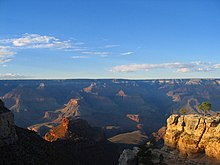

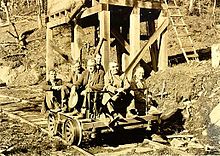
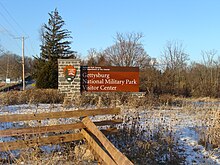

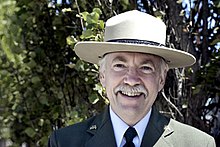
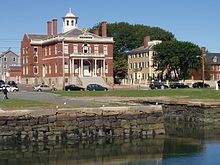
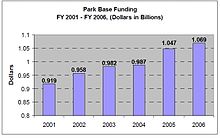
No comments:
Post a Comment